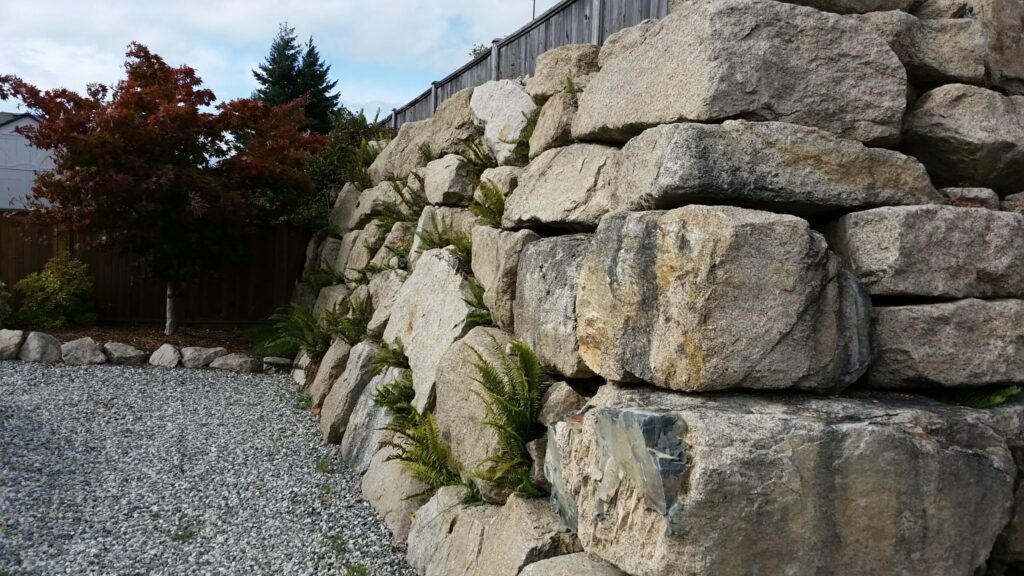Abstract: North Shore and Sunshine Coast Home Inspector note how to assess condition of retaining walls made of large rocks or boulders.
Not Just A Pretty Face
Rock retaining walls over one meter in height are engineered structures. As such, they should last for the lifetime of the building that they surround or border.
As the property owner, you need to inspect your retaining walls every year for signs of movement. In particular the rock walls should be checked during or after:
- Heavy rains
- Waterfalls over the top
- Water seeping between the joints
- After the freeze-thaw cycle in spring
Look for unusual conditions such as:
- Water stains
- Depression or sunken sections
- Wet or soft soils beneath the wall
- Any sedimentation buildup that fans out from the base of the wall
- Plants that have been dislodged of appear offset from their prior position in the nooks
- Bulging rocks or sections of wall that you don’t remember seeing before
- Rocks that have cracked and are compromised from their original size
If you do find an issue with your rock retaining wall, contact a qualified contractor soonest possible. A sense of urgency is important, as a failure in this element will affect the structural integrity of your house.
If your home is newer than 10 years, check your home warranty documents and submit a claim for this structural issue. Repairs may be covered under your policy.

